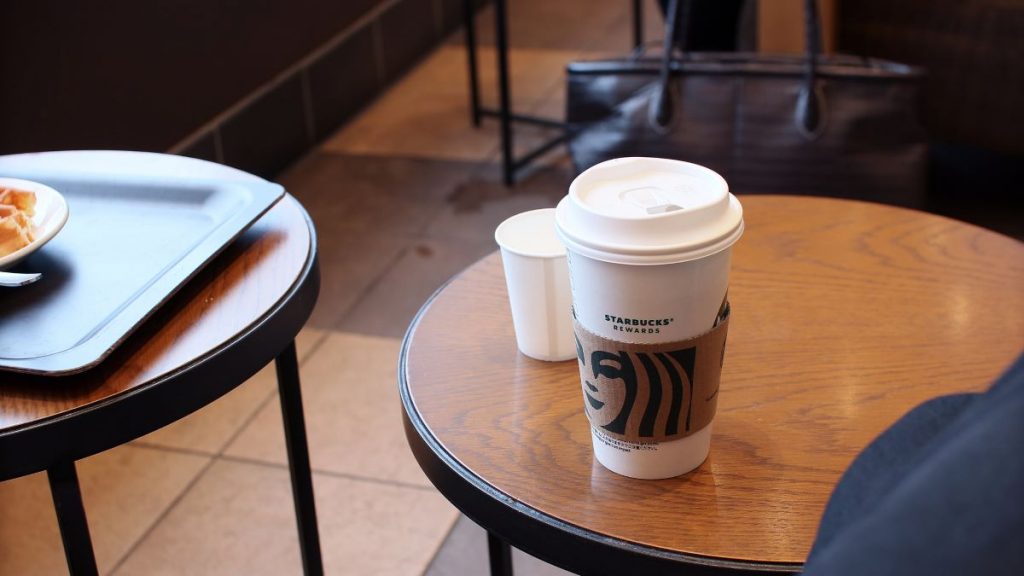Coffee in Italy is all the rage. If you didn’t know any better, you’d think Italians invented it.
While they might not have invented it, they did seriously contribute to its evolution.
Read along for a breakdown of all things when it comes to coffee in Italy, and an interesting dash of history for the coffee lovers.
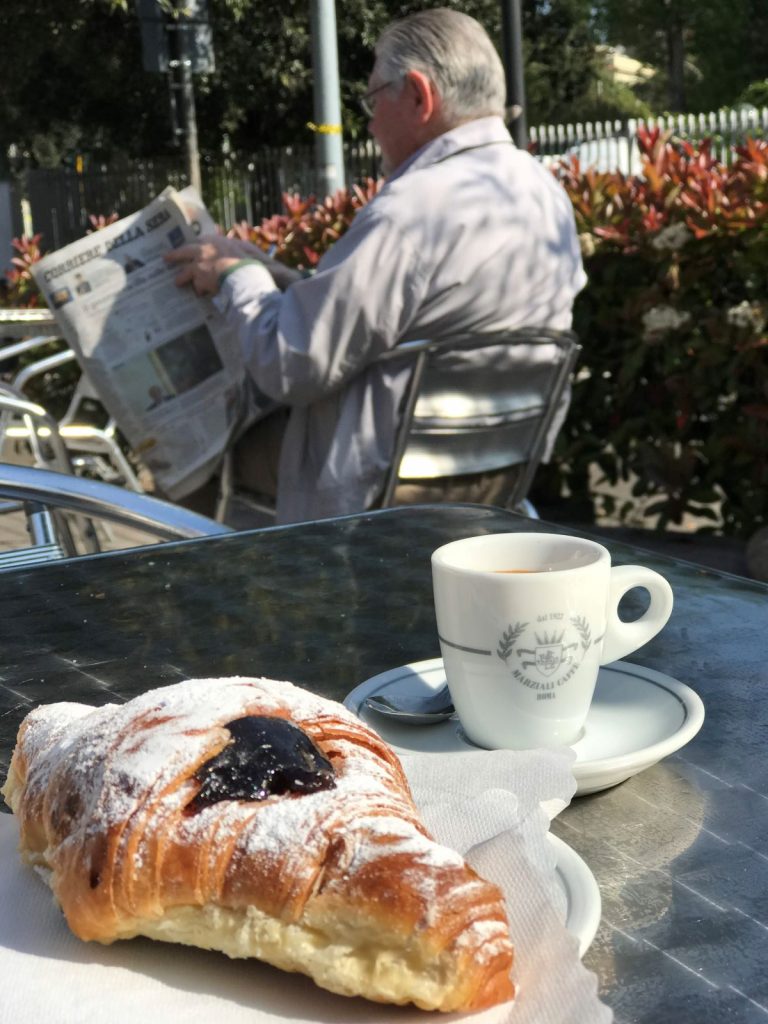
History of coffee in Italy
Coffee in Italy didn’t become a thing until it showed up on the shores of Venice in the 16th century. It was first discovered in Ethiopia and developed as a perk-you-up beverage in Yemen. The port of Venice was the first place in Italy—and all of Europe—to witness the arrival of this caffeinated bean. It didn’t take long for coffee spots to start popping up all over the place after that.
In the mid-18th century, Venice boasted over 200 coffee houses. Initially condemned by the Church, coffee earned redemption after Pope Clement VIII gave it a try.
At the 1884 General Expo in Turin, Angelo Moriondo won bronze for a steam-powered coffee-making contraption. Then, 17 years later in Milan, Luigi Bezzera enhanced Moriondo’s invention, creating espresso by forcing high-pressure water through pressed ground coffee.
This birthed various coffee drinks, like cappuccino, macchiato, Americano, ristretto, and caffe corretto, distinguished by their milk and/or water content.

Basic rules for coffee in Italy
- In most Italian coffee bars, particularly in urban areas, you typically pay at a cashier near the entrance before ordering. After paying, you provide your receipt to the barista and verbally reiterate your order, such as “Un espresso, per favore.”
- Some coffee bars offer seating, but, as you’ll notice, most Italians stand at the bar and sip their espressos. So, expect to stand, al banco, at the bar counter.
- If you’re at a caffé with outdoor seating, especially if the caffé is located on a piazza, you’ll pay more for the coffee for the privilege of the fresh air and lovely views.
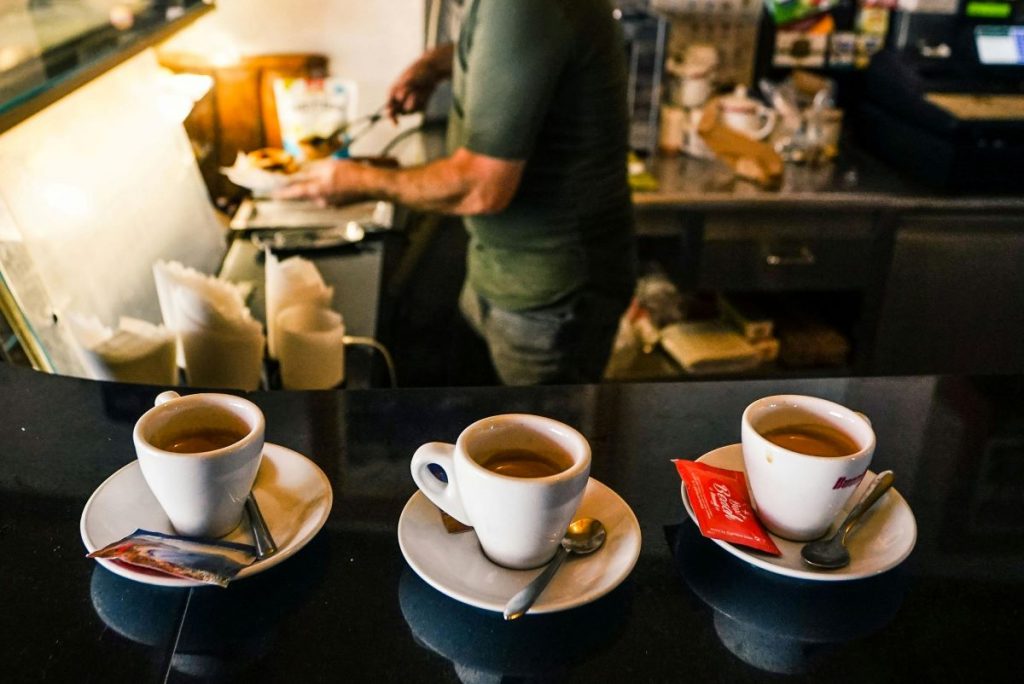
Types of coffee in Italy
Espresso
The king of all Italian coffee drinks. Espresso is a highly condensed form of a coffee. It got its name because of the machine’s ability to turn coffee grounds and water into a small and explosive burst of coffee in a short period of time.
Tips for drinking espresso:
- Espresso can sometimes have bitter undertones, which is why many Italians stir a bit of sugar into it.
- Even if you don’t add sugar, be sure to take the diminutive spoon that comes with your tiny coffee and gently stir the coffee, going from top to bottom. This brings out the taste and the aroma of the espresso and enhances the overall coffee experience.
- Drink it within the first two minutes. Coffee pros claim that about half of the flavor of espresso disappears after two minutes. So, espresso is not for savoring. At least not longer than two minutes.
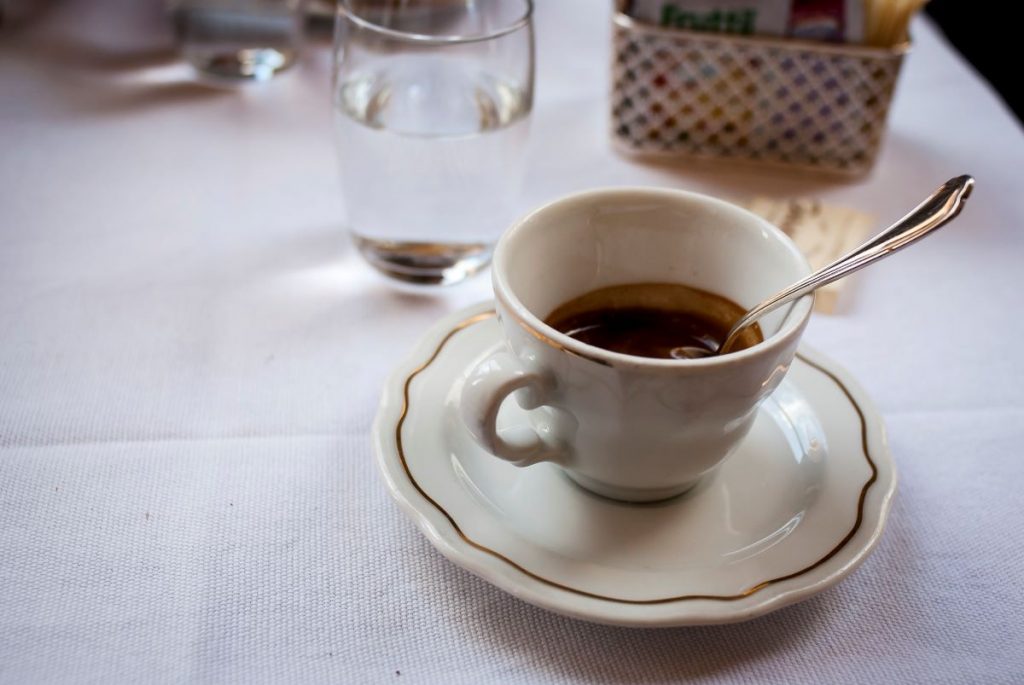
Cappuccino
The second most famous coffee drink is the cappuccino. In Italy, it consists of a typical 50-milliliter shot of espresso and an equal amount of milk, most of the latter is foamed milk. Outside of Italy, particularly in the United States (and especially at corporate chain coffee shops) the amount of foamed milk is two-to-three times the ratio of the espresso.
Cappuccino is a diminutive form of the Italian word, cappuccio, or hood. That’s because when the steamed white milk and the black coffee intermingle in the cup, the beverage partly takes on a brown-ish color, the same hue as the hooded robes that capuchin monks wear. Hence, the name.
Tips for drinking cappuccinos:
- The one hard-and-fast rule that Italians are vigilant about is: no cappuccinos after 11 a.m.. No one can really tell you why they enforce this law, as if sipping coffee and milk in the afternoon is some kind of culinary crime.
- There are some scientists and coffee pros who theorize that a large portion of Italians are actually lactose intolerant, and so they’ve collectively built a cultural rule into their society as a result. If you do order a cappuccino after lunch, expect to garner some raised eyebrows.
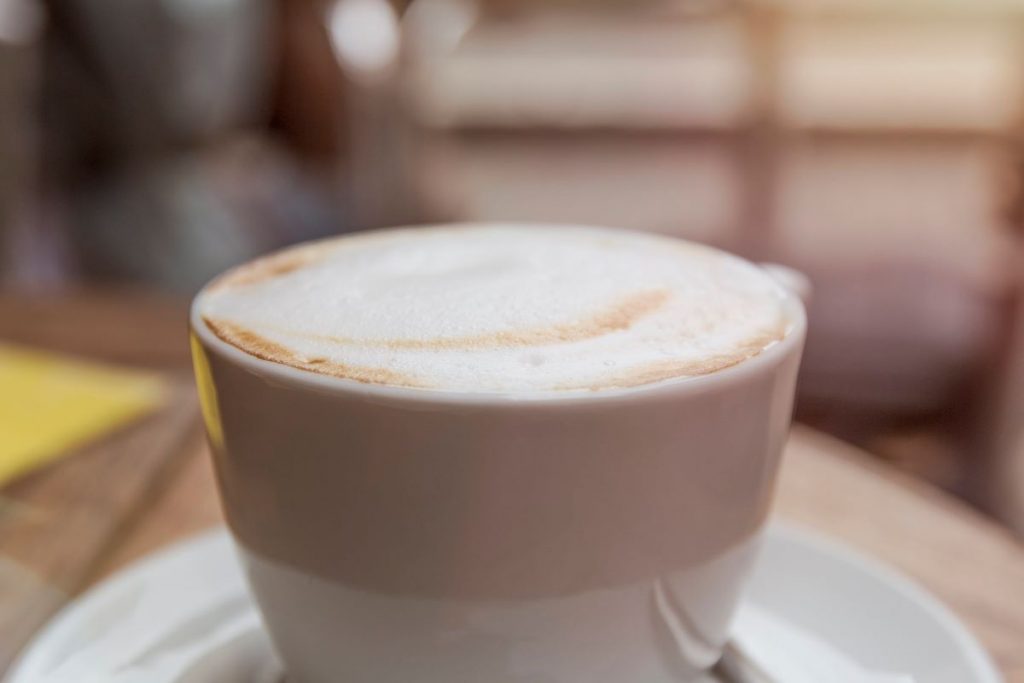
Macchiato
This diminutive coffee drink, the macchiato, means “stained” or “spotted” in Italian. That’s because it is made up of an espresso shot with just a “spot” of foamed milk. It’s the Goldilock of Italian coffee drinks. If you don’t like straight espresso and there’s too much foamed milk in a cappuccino, a macchiato might be just right for you.
Tips for drinking macchiatos:
- In Italy, you can just order macchiato and you’ll get exactly what you expect. If you’re in northern Europe, however, they’ll ask if you want an espresso macchiato or a latte macchiato which is the inverse of ingredients: instead of being “stained” by milk, the latte macchiato is heavy on milk with just a “stain” of coffee.
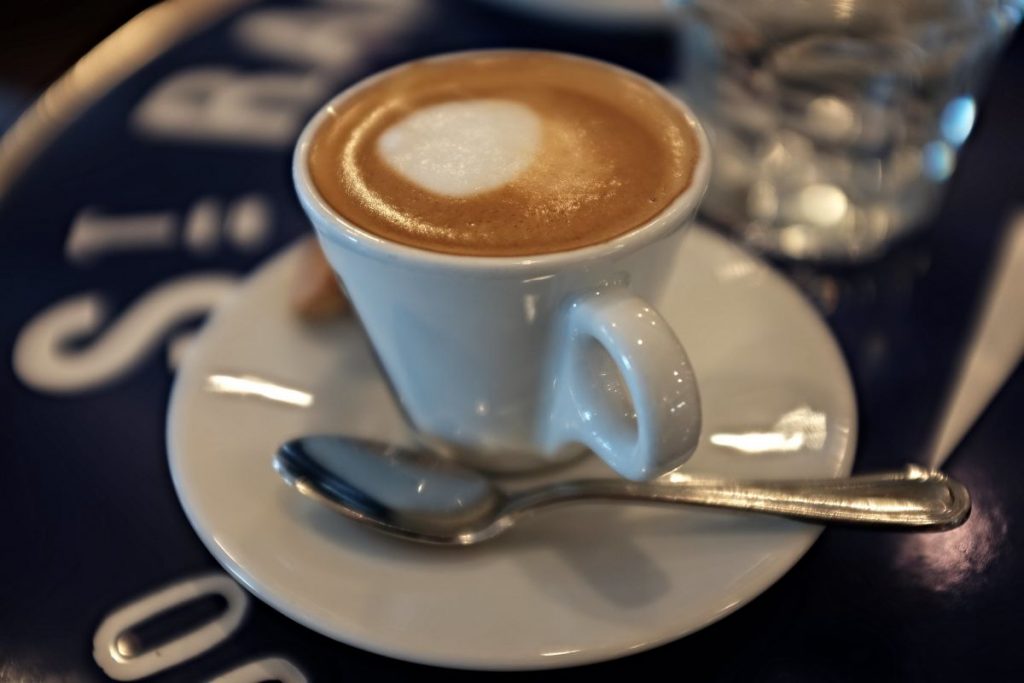
Ristretto
For the hardcore, a ristretto is a shortened shot of espresso. It uses the same amount of coffee, but about half as much water when making it, so it’s a highly concentrated burst of caffeine in your cup. If you’re pressed for time and can’t linger at the bar but need a caffeine fix, ristretto will do the trick.
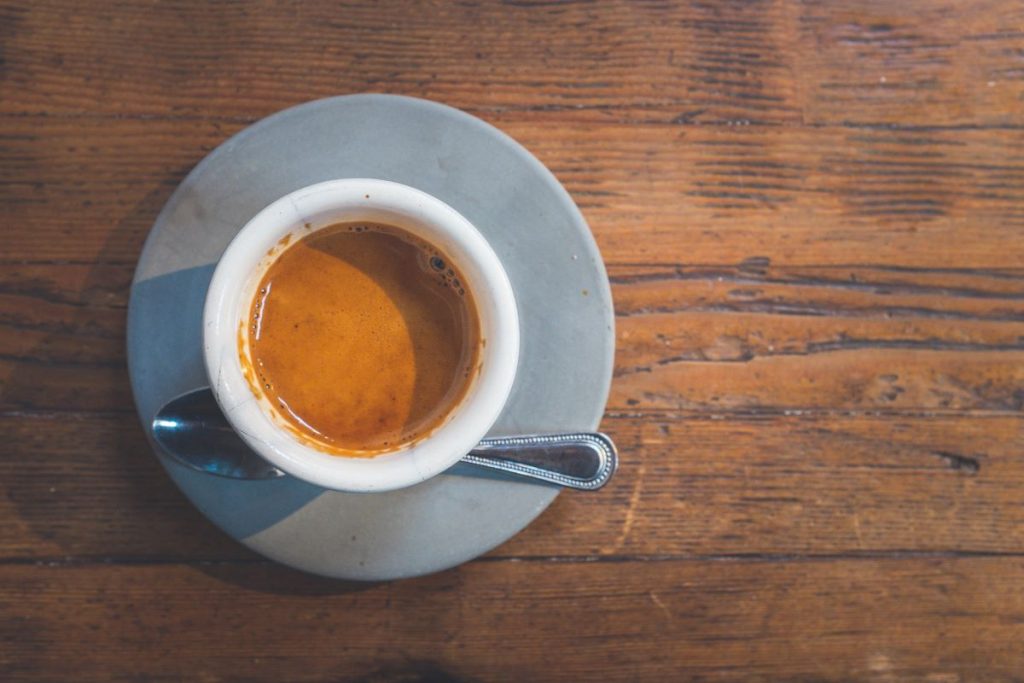
Americano
When you might want a larger coffee in Italy so you can sit at a table while reading a book or chatting with a friend, you might want to consider an Americano: a shot of espresso with approximately two or three times the ratio in hot water. It’s called Americano simply because of its resemblance to American filtered coffee.
It’s not clear who coined the name, but there is an unverified origin story for the Americano that American G.I.s station in Italy after World War II, added hot water to espresso to ease the potency of the drink.
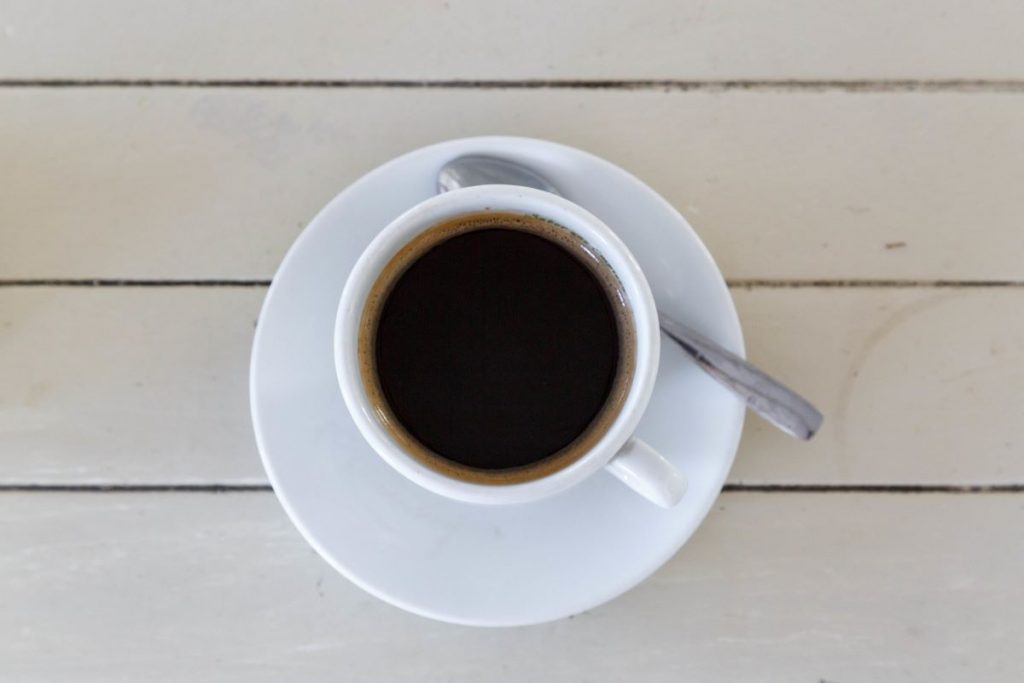
Caffé corretto
When you’re feeling courageous or just need something to calm you down along with your espresso, ask for a “caffé corretto.” Translated as “corrected coffee,” this version of espresso includes a shot of booze, usually grappa but sambuca has also found its way into the cup from time to time.
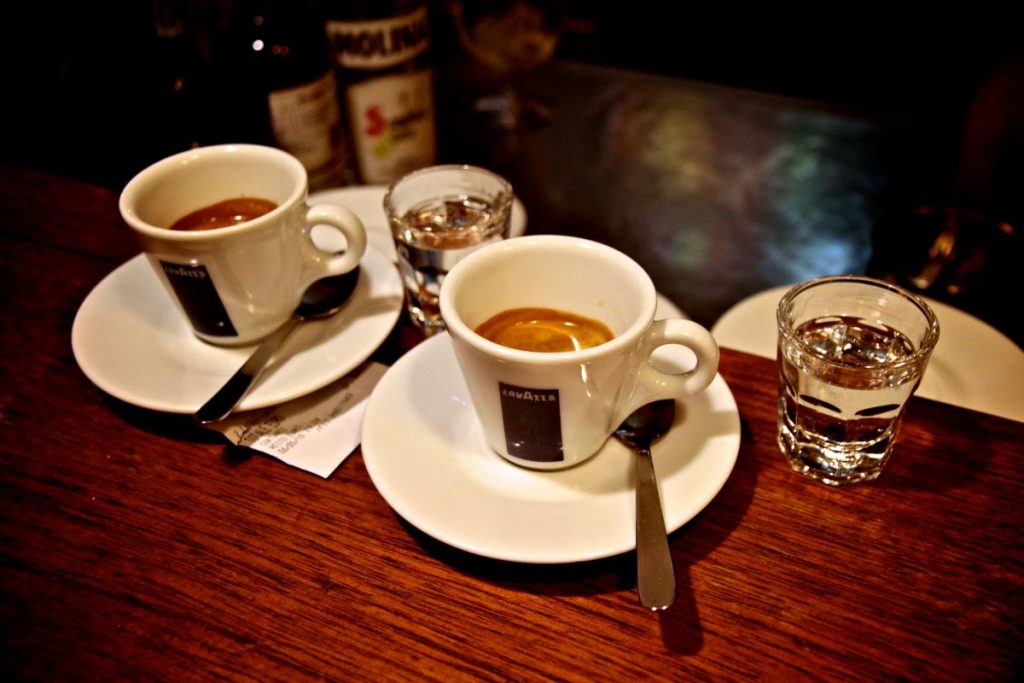
Coffee in Italy conclusion
Skip the Starbucks when you’re in Italy and go to a local coffee bar. You’ll appreciate it all the more now that you know a bit more about coffee in Italy.
